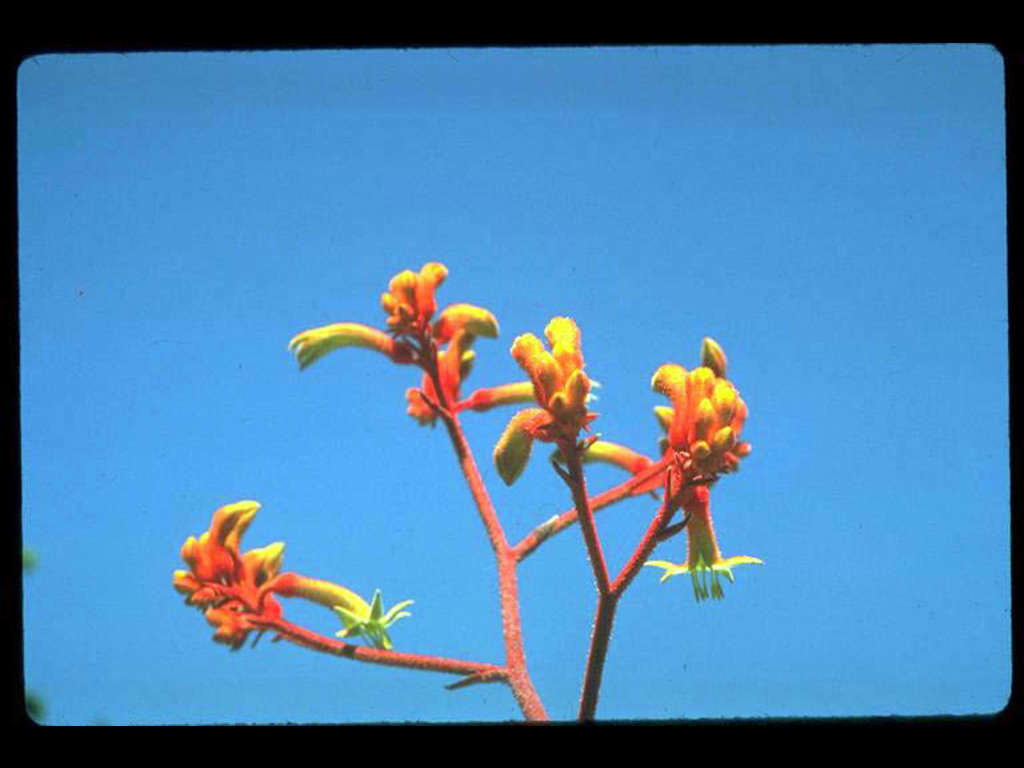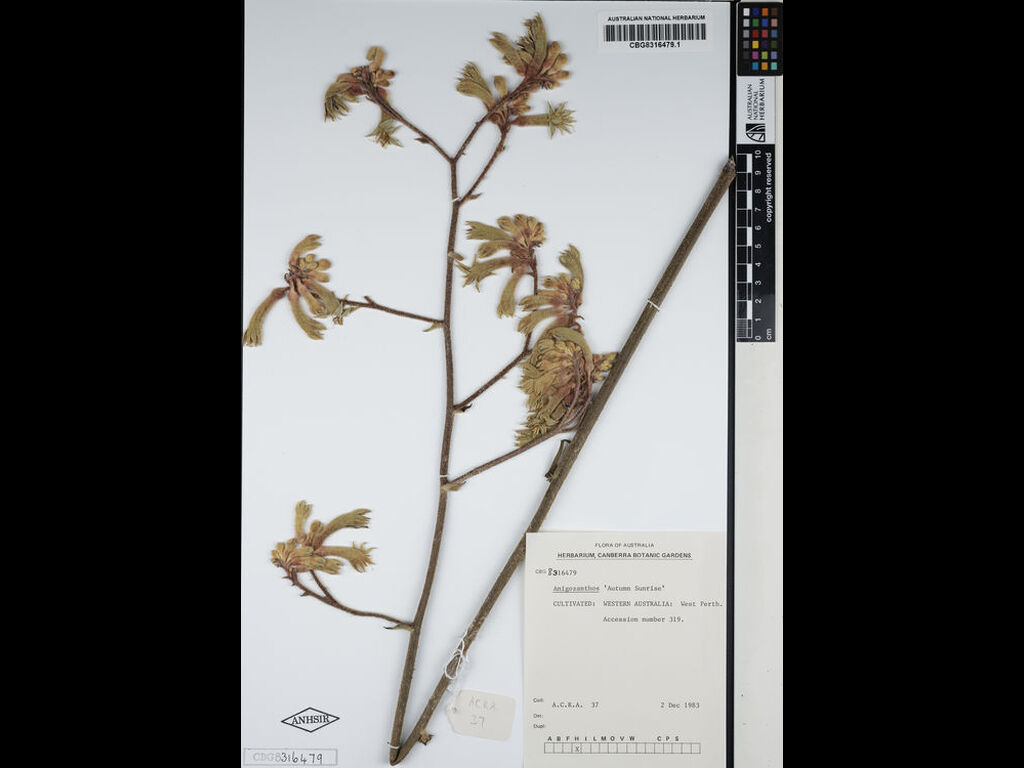Anigozanthos 'Autumn Sunrise'
- File Number
- 319
- ACRA Field Book Number
- 37
- Registration Date
- 10/10/1991
- Application Received
- 01/12/1983
- Family
- Haemodoraceae
- Cultivar Name
- Anigozanthos 'Autumn Sunrise'
- Origin
- Anigozanthos 'Autumn Sunrise' is a hybrid of A. pulcherrimus and A. flavidus. The cultivar was selected by Mr K Oliver of Western Australia in 1972. The name refers to the colour of the flowers. The cultivar was first received by the Authority in December 1983. Registration applied for by the Perth Zoo Social Club, South Perth, Western Australia.
- Characteristics
- Stems to ca. 1.75m tall, panicle plumose, slightly villous. Flowers on pedicels to ca. 6mm long; the wool plumose, dense with red tinge on the ovary, becoming more yellow green and less dense towards the lobes. Perianth tube to ca. 4cm long, scabrous inside, hairs longer towards the base, some with stellate tips immediately above the ovary; lobes to ca. 1cm long, silvery plumose inside. Anthers oblong-linear, more or less the same length as filaments, the connective tipped with a gland like appendage. Ovules 2-6 per locule. The flowering season is November in Western Australia. Diagnosis: This cultivar differs from A. flavidus in having a broader but shorter perianth tube which tapers gradually from the base to the end of the tube and the corolla lobes are reflexed. The flower stem is less branched than A. flavidus and the leaves are broader and less upright. Both the anthers and the filaments are much longer than A. flavidus, and the anthers are light green whereas in A. flavidus they are always orange. Anigozanthos 'Autumn Sunrise' differs from A. pulcherrimus in having generally broader leaves which are lighter green and more upright. The perianth tube is longer than A. pulcherrimus and broader, but there are less flowers per branch. Anthers and filaments are similar in colour and shape but larger than A. pulcherrimus.
- Cultivation
- This cultivar prefers reasonably moist, well drained soils in a position where sun is received for most of the day. Propagation must be by vegetative means or tissue culture to preserve the cultivar form.
- Publication
- Australian Cultivar Registration Authority (1991), Kangaroo Paws Cultivars. Australian Plants 16(126): 75
- Colour Coding
- RHS Colour Chart 1966hair on young buds: near Orange Red group 33Aperianth tube: grading from Orange Red group 33Ato Yellow Green group 154Aflower stems: close to Red Group 53Ainside perianth tube: Greyed Green group 194Afoliage: Green Group 137A
- Propagation
- Division or tissue culture
- Applicant Name
- Perth Zoo Social Club
- Uses
- As part of a mass planting or mixed in a shrubbery, or as a spectacular feature plant or large display pots.
- Availability
- Unknown
- ANBG Accession Numbers
- ACC319, ACRA037, CBG8316479
- NSL ID
- -

